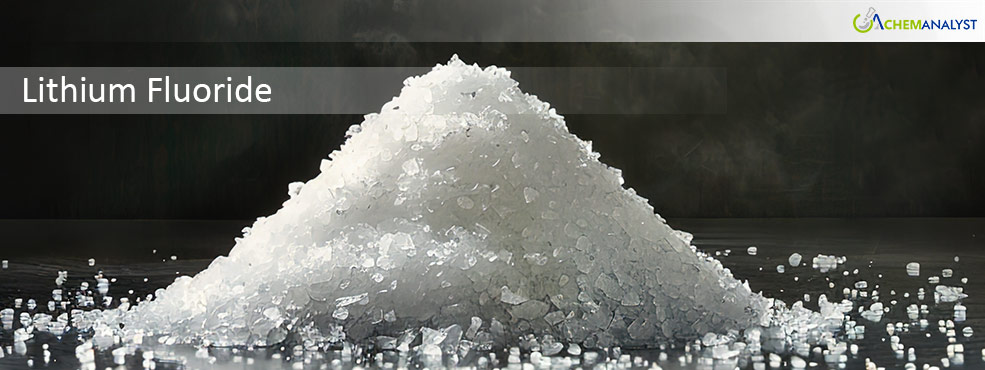Welcome To ChemAnalyst

Entering January 2025, Lithium Fluoride prices in the U.S. domestic market continued their downward trajectory, driven by a combination of cheaper imports and sluggish consumer demand. This decline reflects a broader trend in the global Lithium Fluoride market, impacted by a surplus of lithium salts and cautious market sentiment.
Cautious buying behavior among battery manufacturers and electric vehicle (EV) makers, particularly in response to tightening regulations in key markets like the U.S. and EU, has significantly dampened demand for Lithium Fluoride. The market is currently grappling with a global surplus of lithium, exerting downward pressure on Lithium Fluoride prices as well. While major exporters maintain strong production, the overall market sentiment remains subdued due to concerns about declining EV demand and price competitiveness.
In China, the leading producer of Lithium Fluoride, prices dropped due to inadequate cost support from upstream markets. The declining prices of lithium carbonate and hydrogen fluoride have compelled producers to reduce their own prices to remain competitive. While the long-term outlook for downstream production remains positive, year-end inventory management activities have dampened current buying sentiment for Lithium Fluoride.
The upstream mining sector faces challenges, including restrictions on mining operations, the closure of older mines, and difficulties in discovering new deposits. This, coupled with the ongoing negotiation period for long-term contracts with smelters, has created uncertainty in the upstream market as well as downstream Lithium Fluoride market. Smelters, however, are committed to maintaining their prices, adding another layer of complexity to the market dynamics.
Despite the challenges, there are signs of renewed growth in the electric vehicle market. Car manufacturers in the United States experienced a surge in EV sales during the last quarter of 2024, driven by reduced interest rates and enhanced incentive programs. This surge, following a period of slower growth due to concerns about vehicle costs and charging infrastructure, provides a glimmer of hope for the future of the Lithium Fluoride market.
The broader market for lithium-ion batteries continues to experience significant price declines. Battery pack prices plummeted significantly in 2023, reaching a record low. This steep decline is attributed to a confluence of factors, including overcapacity in cell manufacturing, economies of scale, declining raw material costs, the increasing adoption of cost-effective LFP batteries, and slower-than-expected growth in the EV market. This overcapacity, coupled with increased competition, has exerted significant downward pressure on battery prices.
According to the ChemAnalyst database, the Lithium Fluoride market is currently navigating a period of uncertainty. While challenges remain, including subdued demand and price pressure, the long-term outlook for the industry remains positive. The continued growth of the electric vehicle market, coupled with advancements in battery technology, is expected to drive demand for Lithium Fluoride in the years to come. However, market players will need to adapt to the evolving market dynamics and navigate the challenges posed by overcapacity and price volatility.
We use cookies to deliver the best possible experience on our website. To learn more, visit our Privacy Policy. By continuing to use this site or by closing this box, you consent to our use of cookies. More info.
